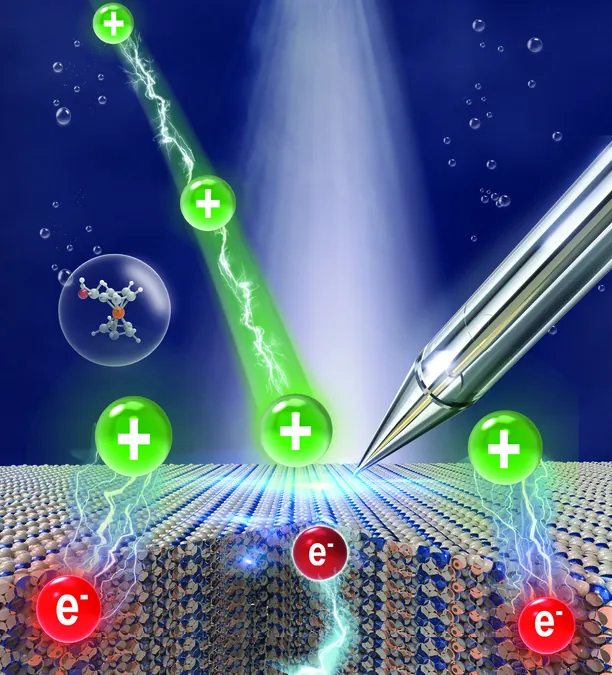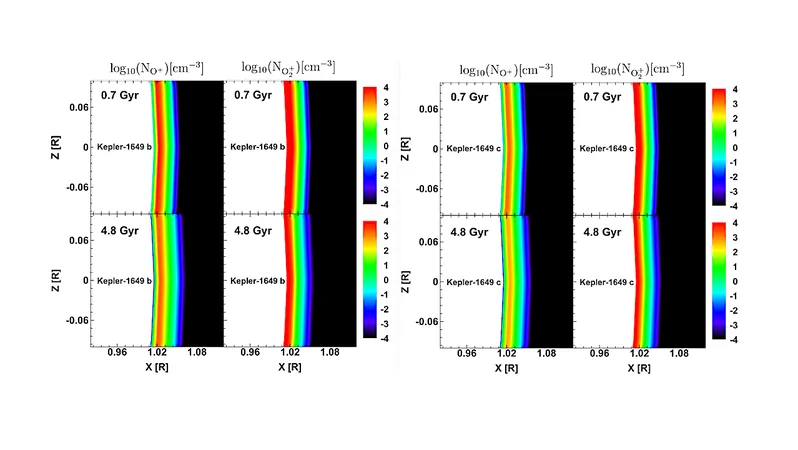
Revolutionizing Photocatalysis: Groundbreaking Discovery in Charge Transfer
2025-04-10
Author: Siti
Unlocking the Secrets of Photocatalysis
Photocatalysis is a game-changing process that hinges on three key steps: light absorption, charge separation, and chemical reactions. These crucial reactions happen at the solid-liquid interface, where the interplay of charged environments plays a pivotal role in determining reaction kinetics. Traditionally, research has zeroed in on the charge transfer mechanisms within solid catalysts.
A Breakthrough in Measuring Surface Charges
Understanding how surface charges interact with charge transfer at the catalyst-electrolyte interface is vital for enhancing photocatalysis. However, measuring these surface charges in electrolytes on a nanoscale level has presented a long-standing challenge.
In a groundbreaking study published in the Journal of the American Chemical Society, a team led by Prof. Fan Fengtao and Prof. Li Can from the Dalian Institute of Chemical Physics (DICP) has unveiled an innovative method to measure surface charges in liquid environments.
Innovative Techniques Yield New Insights
Employing a charged probe to isolate electrostatic forces from long-range interactions, the researchers successfully mapped the electric field distribution within the electrical double layer. This advancement allowed for direct measurements of surface potential and photovoltage under realistic liquid conditions.
Crucially, they discovered that surface charges at the solid-liquid interface generate an extra driving force, effectively pulling photogenerated electrons toward the surface, thereby accelerating charge transfer reactions.
Measuring Local Surface Potential
The researchers quantitatively demonstrated how the local surface potential in the electrolyte varies with pH levels, providing insights that span micro to nanoscale observations. They highlighted a direct relationship between surface potential and the flux of reaction products, revealing that the photocatalytic oxygen evolution reaction rate is significantly influenced by the electric field generated by surface charges.
Finding the Ideal Conditions for Photocatalysis
Additionally, they pinpointed the optimal pH range for achieving efficient spatial separation of photogenerated electrons and holes, visualizing the entire charge transfer process from the space charge region to active reaction sites.
A Catalyst for Future Innovations
"This imaging framework provides a powerful platform for directly measuring surface potential and reaction current under operational conditions," Prof. Fan stated. "It will pave the way for deeper insights into nanoscale photocatalytic charge transfer kinetics and aid in designing more efficient photocatalysts and optimizing reaction conditions."
Prof. Li added, "Our findings shed light on addressing the bottlenecks that have long plagued photocatalytic reactions, opening the door for future advancements in this promising field."


 Brasil (PT)
Brasil (PT)
 Canada (EN)
Canada (EN)
 Chile (ES)
Chile (ES)
 Česko (CS)
Česko (CS)
 대한민국 (KO)
대한민국 (KO)
 España (ES)
España (ES)
 France (FR)
France (FR)
 Hong Kong (EN)
Hong Kong (EN)
 Italia (IT)
Italia (IT)
 日本 (JA)
日本 (JA)
 Magyarország (HU)
Magyarország (HU)
 Norge (NO)
Norge (NO)
 Polska (PL)
Polska (PL)
 Schweiz (DE)
Schweiz (DE)
 Singapore (EN)
Singapore (EN)
 Sverige (SV)
Sverige (SV)
 Suomi (FI)
Suomi (FI)
 Türkiye (TR)
Türkiye (TR)
 الإمارات العربية المتحدة (AR)
الإمارات العربية المتحدة (AR)